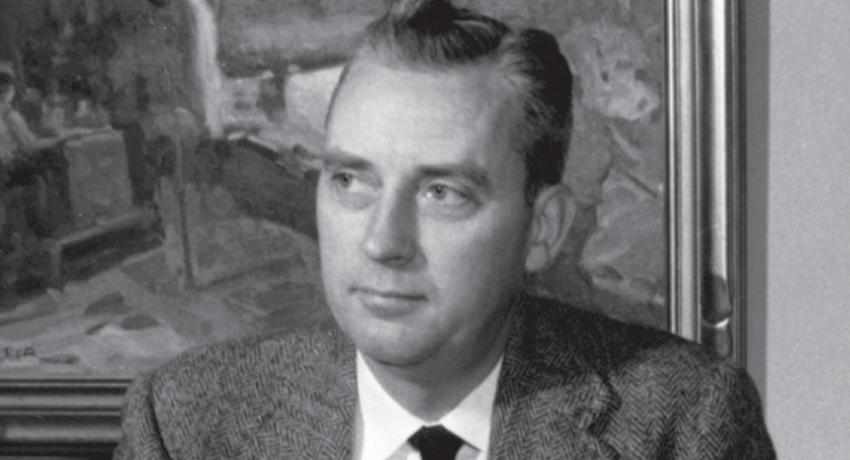Osborn’s leadership impacts research
While he had a significant impact as a
researcher, Elburt Osborn also made his
mark at Penn State in research leadership,
promoting an interdisciplinary approach.
Osborn joined Penn State in 1946 as a
professor of geochemistry and was the first
in the United States to hold this title. He
initiated a program in high-temperature
experimental geochemistry bearing on
phase relations among oxides, applicable
both to the origin of igneous rocks and to
ceramics. Osborn was recruited to Penn
State by Edward Steidle, dean of the
College of Mineral Industries (later the
College of Earth and Mineral Sciences), to
become chair of the Department of Earth
Sciences.
In 1950, Osborn secured for Penn State the
first grant offered by the U.S. Office of
Naval Research for the study of igneous
petrology. In 1953, he was named Dean of
the College of Mineral Industries and in
1959 was promoted to vice president of
research for the University. In this role,
he embraced interdisciplinary research,
including introducing the first interdisciplinary
curriculum in solid state technology
in 1960, and opened the Interdisciplinary
Materials Research Laboratory in 1962. In
1968, Osborn was elected to the National
Academy of Engineering for advances in
ceramics, slag, mineral, and steel
technologies.
After his retirement from Penn State in
1970, Osborn was named director of the
U.S. Bureau of Mines where he helped to
establish the Pennsylvania Mining and
Mineral Resources Research Institute.

